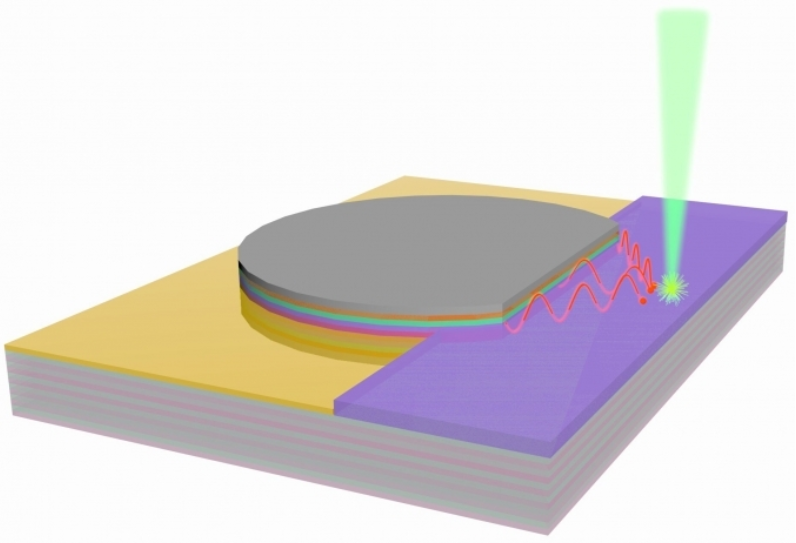Researchers have developed and demonstrated new green light absorbing transparent organic photodetectors that are highly sensitive and compatible with CMOS manufacturing methods. Incorporating these new photodetectors into silicone hybrid image sensors could be useful for many applications. These applications include light-based heart rate monitoring, fingerprint recognition and devices that detect the presence of nearby objects.
Whether used in smartphones or scientific cameras, most imaging sensors today are based on CMOS technology and inorganic photodetectors that convert light signals into electrical signals. Although photodetectors made of organic materials are attracting attention because they can help improve sensitivity, it has so far proved difficult to manufacture high-performance organic photodetectors.
Co-lead researcher Sungjun Park, from Ajou University in South Korea, said: "Incorporating organic photodetectors into mass-produced CMOS image sensors requires organic light absorbers that are easy to manufacture on a large scale and capable of vivid image recognition to produce sharp images at high frame rates in the dark. We have developed transparent, green-sensitive organic photodiodes that can meet these requirements."
The researchers describe the new organic photodetector in the journal Optica. They also created a hybrid RGB imaging sensor by superimposing a transparent green absorbing organic photodetector onto a silicon photodiode with red and blue filters.
Kyung-Bae Park, co-leader of the research team from the Samsung Advanced Institute of Technology (SAIT) in South Korea, said: "Thanks to the introduction of a hybrid organic buffer layer, the green-selective light-absorbing organic layer used in these image sensors greatly reduces crosstalk between different color pixels, and this new design could make high-performance organic photodiodes a major component of imaging modules and photosensors for a variety of applications."
More practical organic photodetectors
Most organic materials are not suitable for mass production due to their sensitivity to temperature. They either cannot withstand the high temperatures used for post-treatment or become unstable when used at moderate temperatures for long periods of time. To overcome this challenge, scientists have focused on modifying the buffer layer of the photodetector to improve stability, efficiency, and detection. Detectability is a measure of how well a sensor can detect weak signals. "We introduced a bath copper line (BCP) : C60 hybrid buffer layer as the electron transport layer, which gives the organic photodetector special properties, including higher efficiency and extremely low dark current, which reduces noise," says Sungjun Park. The photodetector can be placed on a silicon photodiode with red and blue filters to create a hybrid image sensor.
The researchers show that the new photodetector exhibits detection rates comparable to those of conventional silicon photodiodes. The detector operated stably for 2 hours at temperatures above 150 °C and showed long-term operational stability for 30 days at 85 °C. These photodetectors also show good color performance.
Next, they plan to customize new photodetectors and hybrid image sensors for a variety of applications, such as mobile and wearable sensors (including CMOS image sensors), proximity sensors, and fingerprint devices on displays.





















